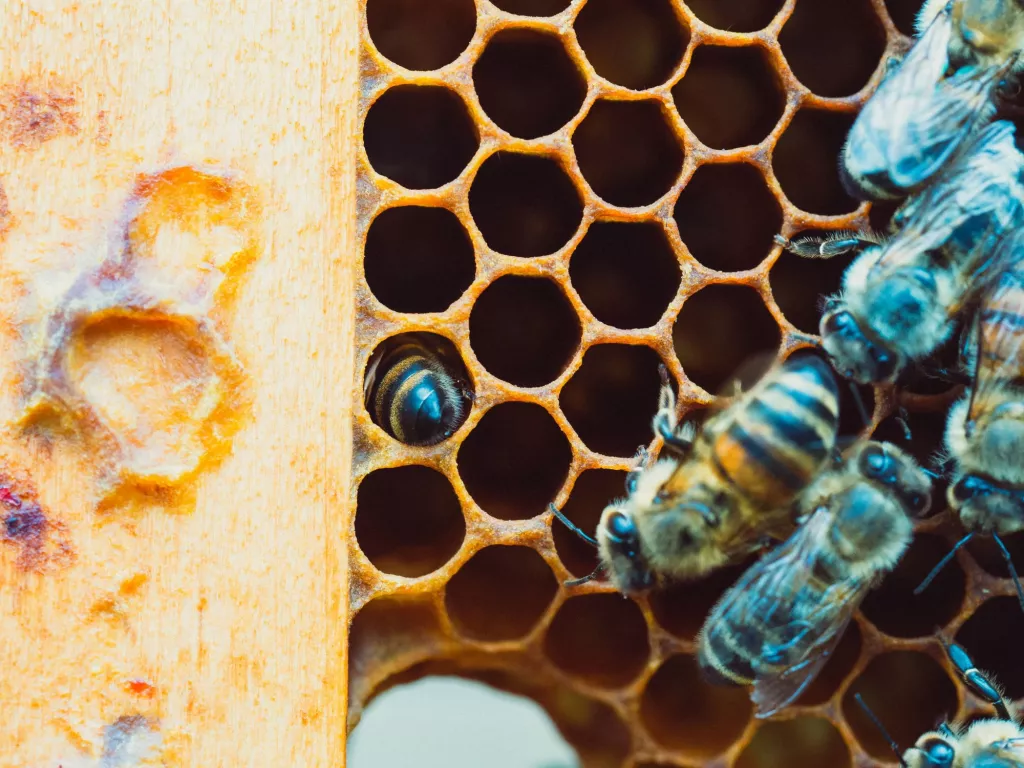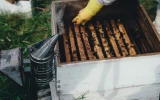How to Split a Hive Without Finding the Queen
Time is of the essence if your bees are already exhibiting swarming symptoms, and there is no other option except to separate the hive. By doing this, you'll guarantee that your productive queen and hive stay in your bee yard. But how will you do this without locating the queen?
To split a hive without finding the queen, you can use the vertical split approach. Splitting a productive and healthy colony in half is the general concept of this technique. The colony is set up in such a way that withdrawing bees from the queenright side of the split is essential.
Start by assessing your beekeeping objectives, your current hive/apiary, and your resources before deciding to split without finding the queen. Be prepared, and keep reading to learn all the splitting techniques you may use to save your bee colony.
Summary
- If you want to expand your apiary, the hives must be strong enough to split.
- You should have removed two to three brood frames from the colony you intend to divide.
- It costs money for you to divide your hives; you'll need enough brood boxes, bottom boards, honey boxes, frames, and room for the new hives

On this page:
Splitting a Hive Without Finding the Queen
Vertical splitting is entirely dependent on your beekeeping objectives. If you are successful, you will begin with one colony and then two. These are the detailed instructions for using this vertical splitting method in beekeeping.
-
The colony you want to divide should have had two to three brood frames removed. Place these frames in the middle of an empty brood box. The brood frames should have eggs, newly emerged larvae, and capped brood, all of which should be in nursing bees, as with any split.
-
Add at least one frame carrying pollen and one with honey next to the brood frames.
-
It would be best if you used a drawn comb or foundation frame to finish the remaining space in the box.
-
Additionally, insert a drawn comb or foundation frame into the original brood box.
-
Put the initial brood box on top of a double-screened board.
-
Make sure the entrance of the double-screen board faces the higher brood box and is on the back of the original hive.
-
Stack the double-screen board on top of the new split.
-
Over the newly created division, place the hive lid.

Understanding the Splitting Principle in the Absence of the Queen
The queen bee is spoiled from a very young age and has unusual nutritional requirements. The bees won't, therefore, choose any old larva for the queen. Instead, the nurse bees will give the selected larvae the unique secretions created for royalty a few days after the egg hatches.
The queen is larger than other bees and won't fit in those little hexagons for very long, so they will construct her a unique throne that extends the cell. Follow the instructions above, and you will have done an excellent split once you have determined that you have the proper mixture of the brood.
What follows the vertical splitting method?
You will have two queenright colonies under one roof after this vertical split. You can move one or the other away, doubling the size of your colony. A more potent option would be to combine the two colonies into a single, powerful colony by looking inside the upper box, sacrificing the old queen, and removing the split board.
Additionally, you may easily combine the colonies back into one if something goes wrong, such as the old queen dying or the new queen not being mated.
Do You Have the Essential Tools to Split the Hive?
Splitting a hive is equivalent to artificially inseminating a colony in beekeeping. The bees wouldn't have persisted for as long without it. Colonies expand naturally through swarming. As a result, many beekeepers are interested in learning how to split a beehive. But only some hives are prepared for splitting because there are essential factors to consider.

Does the hive have the strength to split?
The hives must be sturdy enough to split if you desire to increase the size of your apiary. Dividing a pack with a weak population, brood, or honey/pollen store will put more strain on the colony because a growing beehive requires a strong queen and workforce to be ready for overwintering. Splitting an unprepared hive might lead to the failure of not one but two beehives.
Do you have the necessary time, resources, and room?
It costs money for you to divide your hives. When determining whether to split a bee colony, considerations such as time, equipment availability, and space are fundamental. You'll need enough brood boxes, bottom boards, honey boxes, frames for the split, and room for the new hives in or near your bee yard where they can get to the resources they require.
Also, each split will take a different amount of time depending on your bee population and preferences.

